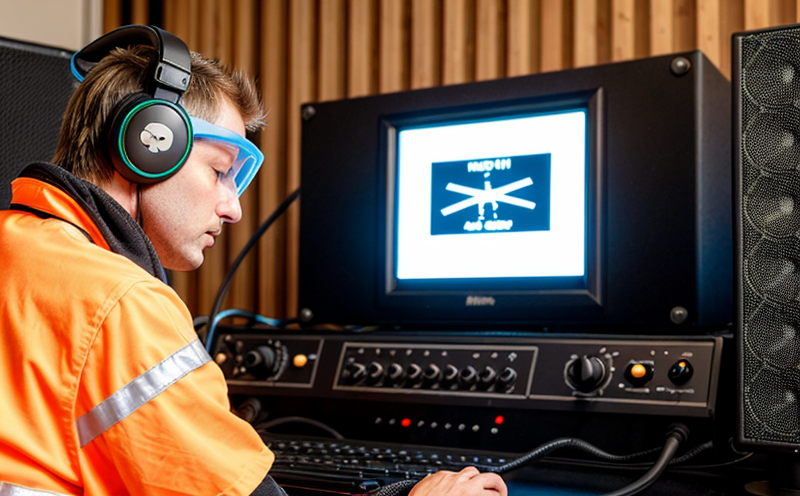ISO 8124-1 Free-Field Acoustic Testing for Toys
The ISO 8124 series of standards is widely recognized for ensuring the safety and quality of toys. The first part of this standard, ISO 8124-1:2019, focuses on mechanical properties and specific requirements to ensure that toys are safe for children. Among these, acoustic safety testing plays a crucial role in safeguarding children from potential noise hazards.
Acoustic testing is essential because excessive noise levels can cause hearing damage or discomfort. According to studies by the World Health Organization (WHO), prolonged exposure to high noise levels can lead to temporary or permanent hearing loss. By adhering to ISO 8124-1, manufacturers and designers of toys can ensure that their products do not emit harmful sound levels.
The testing method for free-field acoustic evaluation involves measuring the emitted noise level from a toy in an open environment where there is no interference or reflection. This ensures accurate measurement of the actual sound produced by the toy when it is used normally. The testing apparatus includes a calibrated microphone and an anechoic chamber to ensure precise measurements.
During this process, toys are placed in various positions and orientations to simulate real-world use scenarios. The test duration may vary depending on the type of toy and its intended age group. For instance, toys designed for infants might have a shorter testing period compared to those aimed at older children due to differences in expected usage.
The results are then analyzed using statistical methods provided by ISO 8124-1. These methods help determine whether the noise levels fall within acceptable limits set forth by international standards. Compliance with these standards not only protects consumers but also ensures that manufacturers meet regulatory requirements across different regions.
Real-world applications of this test include ensuring compliance with regulations such as those enforced by Consumer Product Safety Commission (CPSC) in the United States or similar bodies worldwide. It helps toy companies maintain their reputation for producing safe products while avoiding costly recalls and lawsuits.
Why Choose This Test
- Comprehensive Safety Assurance: Ensures that toys comply with international standards, thereby protecting children from potential harm caused by excessive noise levels.
- Regulatory Compliance: Helps manufacturers meet stringent safety regulations imposed by various countries and regions.
- Marketability: Demonstrates commitment to quality and safety, enhancing brand reputation and consumer trust.
- Potential Cost Savings: Avoids expensive product recalls and legal issues associated with non-compliance.
By choosing this test, companies can ensure they are not only meeting current standards but also staying ahead of future changes in regulations. This proactive approach helps maintain a competitive edge in the market by demonstrating a strong commitment to consumer safety.
International Acceptance and Recognition
The ISO 8124-1 standard is internationally accepted and recognized for its rigorous methodology and comprehensive approach to toy safety. Its widespread adoption means that compliance with this standard opens up global markets, allowing manufacturers to sell their products internationally without additional certification processes.
Many countries have incorporated the principles of ISO 8124 into local legislation, ensuring that toys sold within these jurisdictions meet both international and national standards. This harmonization of regulations simplifies compliance for manufacturers operating across multiple regions.
The standard has been endorsed by organizations such as the United Nations Educational, Scientific and Cultural Organization (UNESCO), further emphasizing its importance in promoting global safety practices. Compliance with ISO 8124-1 is often seen as a benchmark of excellence in toy manufacturing, contributing to the overall improvement of public health standards.
Competitive Advantage and Market Impact
- Innovation: By investing in cutting-edge acoustic testing technology, companies can stay ahead of competitors by introducing safer products earlier to market.
- Prestige: Achieving compliance with ISO 8124-1 adds prestige and credibility to a brand, making it more attractive to consumers who value safety above all else.
- Customer Trust: Demonstrating adherence to international standards builds trust among customers, leading to increased sales and customer loyalty.
- Brand Protection: Compliance helps protect brands from negative publicity associated with product recalls or legal actions resulting from non-compliance.
In a crowded market where safety is becoming increasingly important, companies that prioritize acoustic testing stand out. They not only avoid costly mistakes but also enhance their brand image, leading to greater market share and profitability.





